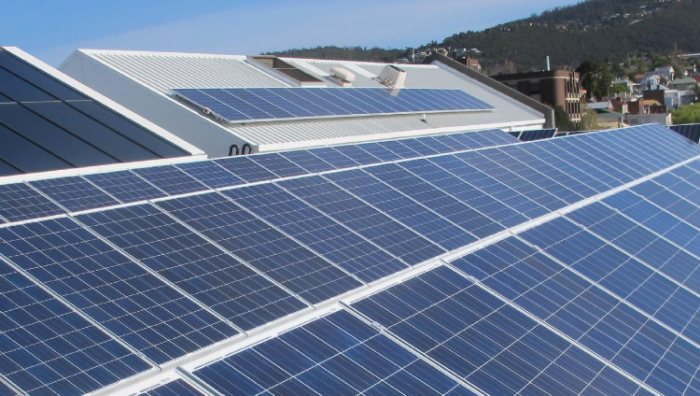
Image: Department of State Growth, Tasmania
Solar owners and supporters in Tasmania have been invited to provide their feedback on the future of Tasmania’s solar feed-in tariff.
The Hodgman Liberal Government committed to review and reshape the state’s solar feed-in tariff during the election campaign, with the results of a review to be implemented by 1 January 2019. Concerns were raised recently when after more than 100 days back in office, there didn’t appear to be any action on the review.
However, on the weekend the Government announced a consultation paper for a review had been published and public submissions were invited.
The review, which will be carried out by a committee consisting of the Director of Energy Planning, the Department of State Growth and the Department of Treasury and Finance, will consider a range of issues including:
- incentives for installing solar generation
- variable pricing between peak and non-peak periods (aka time-varying and time-dependent tariffs)1.
- access to rooftop solar across the community
“The aim of the review is to provide the right conditions and incentives to encourage further take up of solar, while ensuring Tasmanians who have already installed solar are suitably rewarded,” said a statement attributed to Peter Gutwein, Acting Minister for Energy.
Rooftop solar generation currently makes up less than one per cent of electricity generation in Tasmania, but the Hodgman Government says more solar power will help Tasmania diversify its renewable energy capacity.
Discussion Paper Points
Those lodging submissions are invited to comment on the following, plus add any other feedback:
- Suggested changes to reward those who have already installed solar systems and to promote further uptake of solar panels.
- The impacts of such changes – beneficial or otherwise.
- Rooftop solar’s contribution to Tasmania’s energy security.
- The social and environmental benefits and costs of rooftop solar electricity generation.
- Whether the benefits outweigh the costs.
- Alternative mechanisms for promoting solar energy.
- The potential for rooftop solar, smart meters and battery systems to help manage peak demand.
- Equity of access to the technology.
The discussion paper can be downloaded here (PDF). Submissions can be made until Monday, 6 August 2018.
Currently, Tasmania’s solar feed in tariff is set at 8.541 c/kWh for those not grandfathered under the older and more generous legacy FiT (which expires at the end of this year). According to recent Clean Energy Regulator data, there are approximately 32,000 small scale solar power systems (<100kW) installed in Tasmania.
The Tasmanian Government has set a goal of 100 per cent self-sufficiency in renewable electricity generation for the state by 2022 and the lowest regulated electricity prices in Australia by the same year.
Footnotes
- Victoria and New South Wales have already introduced time-varying feed-in tariffs as an option for electricity retailers in those states ↩

 RSS - Posts
RSS - Posts



Just run that past me again:
“The Tasmanian Government has set a goal of 100 per cent self-sufficiency in renewable electricity generation for the state by 2022 and the lowest regulated electricity prices in Australia by the same year.”
What does that mean ? 100% of the renewable energy that they use is to be generated in-state – no green power is to be imported? Why would _that_ be a policy objective?
Or does it mean that they aim to replace 100% of conventionally generated / imported electricity by green power? And complete that by 2022? And have the lowest power rates in the country?
Please explain.
While it’s a little confusing, they mean Tasmania will have 100% renewable electricity in the accounting sense. That is, they will generate more than they consume. They will continue to import electricity from Victoria when it is cheap to preserve water levels in their damns so they can sell hydroelectricity when the price is high.
Thank you for clarifying that, Romal
“They will continue to import electricity from Victoria when it is cheap…”
To me that sounds like they intend to import it at night when the coal fired power stations are ticking over. Sure as hell it won’t be solar power they will be importing.
Isn’t that hypocritical? Shunning coal fired generation for themselves, but relying on someone else’s coal fired generation?
Here is an idea for an article. Can you please explain to me why there needs to be a ‘feed-in tariff’ at all? I thought the per kWh charged was for electricity generation and the separate supply charge was all other stuff such as profit of retailer, power lines and hardware etc. So why is the feed-in not the same at the feed-out price? Energy they get from us as surplus to our needs will just go into the pool they on sell at their full price. This is unfair. Why is there a daily supply charge at all? They are getting their cake and eating it as well. Explaining these two part of the daily costs would be helpful, as would getting some of the big retailers such as AGL to explain from their viewpoint, on the record.
Hi Stephen, Ronald here.
That is something I could write on. But in a nutshell, what an electricity retailer gets when their customer sends one kilowatt-hour of solar into the grid is much less than what customers are charged for grid electricity. The problem isn’t so much that the feed-in tariff isn’t high enough, it’s more that the playing field isn’t level as fossil fuel generators don’t have to pay the cost of cleaning up the pollution they dump into the atmosphere. In Victoria they have incorporated some of the environmental benefit of solar into their feed-in tariff, but not in the rest of Australia.
What is happening with the review, any news yet?